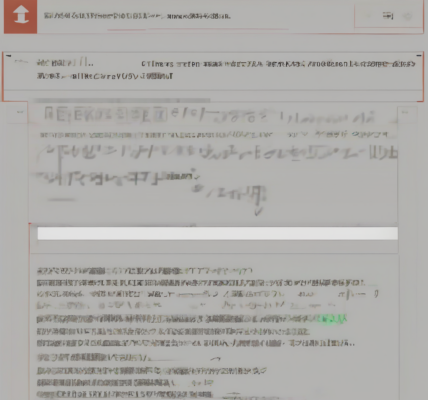Decoding ACH Bank Transfers: A Comprehensive Guide
The Automated Clearing House (ACH) network is the backbone of electronic payments in the United States, facilitating billions of transactions annually. Understanding ACH bank transfers is crucial for businesses and individuals alike, as it impacts everything from payroll processing to online bill payments. This comprehensive guide delves into the intricacies of ACH transfers, exploring their mechanics, benefits, limitations, and best practices.
What is an ACH Bank Transfer?
An ACH transfer is an electronic funds transfer that moves money between bank accounts. Unlike wire transfers, which are immediate, ACH transfers are processed in batches. This batch processing allows for efficient handling of a large volume of transactions, making it a cost-effective solution for recurring payments and high-volume transfers.
- Electronic Funds Transfer: ACH transfers are entirely electronic, eliminating the need for physical checks or cash.
- Batch Processing: Transactions are grouped into batches and processed periodically, typically once or twice a day.
- Cost-Effective: Compared to wire transfers, ACH transfers are significantly cheaper, making them ideal for businesses.
- Widely Accepted: Most banks and financial institutions participate in the ACH network, ensuring broad reach.
Types of ACH Transfers
The ACH network supports two primary types of transfers:
- ACH Credit Transfers: These transfers move funds *into* a recipient’s account. Examples include direct deposit payroll, online bill payments, and vendor payments.
- ACH Debit Transfers: These transfers move funds *out of* an account holder’s account. Examples include recurring bill payments (e.g., subscriptions), loan payments, and electronic checks.
How ACH Transfers Work
The process involves several key players:
- Originating Depository Financial Institution (ODFI): The bank or financial institution initiating the transfer.
- Originator: The individual or business initiating the transfer (e.g., employer, company).
- Receiving Depository Financial Institution (RDFI): The bank or financial institution receiving the funds.
- Receiver: The individual or business receiving the funds (e.g., employee, vendor).
- ACH Operator: The network that processes the transactions (e.g., The Clearing House).
The process generally follows these steps:
- The originator submits the transaction details to their ODFI.
- The ODFI creates a batch file containing multiple transactions.
- The ODFI transmits the batch file to the ACH operator.
- The ACH operator processes the batch file and routes the transactions to the appropriate RDFIs.
- The RDFIs credit or debit the recipient’s accounts.
- The originator and receiver receive confirmations of the transaction.
ACH Transaction Codes
Each ACH transaction is assigned a specific code indicating the type of transaction. These codes are crucial for proper processing and reconciliation.
- CCD (Corporate Credit): Used for business-to-business and business-to-consumer credit transfers.
- CIE (Corporate Entry): Used for business-to-business debit transfers.
- PPD (Prearranged Payment and Debit): Used for recurring payments, such as subscription fees or loan payments.
- CTX (Consumer Telephone Initiated): Used for payments initiated via phone.
- WEB (Internet Initiated): Used for payments initiated via the internet.
Benefits of Using ACH Transfers
ACH transfers offer numerous advantages:
- Cost-Effectiveness: Lower fees compared to wire transfers.
- Efficiency: Automated processing reduces manual work and speeds up transactions.
- Scalability: Easily handles high volumes of transactions.
- Automation: Integrates seamlessly with accounting and payment systems.
- Security: Secure electronic transfer minimizes risk of fraud and loss.
- Convenience: Convenient for both senders and receivers.
Limitations of ACH Transfers
While ACH transfers offer many benefits, they also have some limitations:
- Processing Time: Transactions take several days to clear, unlike immediate wire transfers.
- Batch Processing: Individual transactions cannot be sent immediately; they must be part of a batch.
- Return Rates: Transactions can be returned for various reasons (e.g., insufficient funds, incorrect account information).
- Transaction Limits: There might be limits on the amount of money transferred per transaction or per day.
- Security Risks: While generally secure, ACH transfers are susceptible to fraud if not properly managed.
Best Practices for ACH Transfers
To ensure smooth and secure ACH transactions, follow these best practices:
- Accurate Account Information: Verify account numbers and routing numbers carefully to avoid returns.
- Clear Transaction Details: Include clear and concise descriptions for each transaction.
- Secure Data Transmission: Use secure channels and encryption to protect sensitive data.
- Regular Reconciliation: Regularly reconcile ACH transactions to identify and resolve discrepancies promptly.
- Fraud Prevention Measures: Implement measures to prevent and detect fraudulent ACH transactions.
- Utilize ACH Trace Numbers: Use trace numbers to track the status of transactions.
- Choose a Reliable Provider: Work with a reputable payment processor or banking institution.
ACH Return Codes and Reasons
Understanding ACH return codes is crucial for troubleshooting issues. These codes indicate why a transaction was returned. Common return reasons include:
- Insufficient Funds: The payer’s account does not have sufficient funds to cover the transaction.
- Account Closed: The payer’s or payee’s account has been closed.
- Incorrect Account Number: The account number provided is incorrect.
- Invalid Routing Number: The routing number provided is incorrect.
- Refer to Maker: The transaction requires further review or clarification.
- Unauthorized Debit: The payer disputes the transaction.
ACH and the NACHA Rules
The National Automated Clearing House Association (NACHA) sets the operating rules for the ACH network. Adhering to these rules is critical for ensuring compliance and avoiding penalties.
- Originator Responsibilities: Originators must provide accurate and complete transaction data.
- ODFI Responsibilities: ODFIs must properly process and transmit ACH transactions.
- RDFI Responsibilities: RDFIs must accurately credit or debit accounts.
- Compliance: All participants must comply with NACHA’s rules and regulations.
ACH vs. Wire Transfers
ACH transfers and wire transfers are both methods of electronic funds transfer, but they differ significantly in their processing methods and characteristics:
| Feature | ACH Transfer | Wire Transfer |
|---|---|---|
| Processing Time | 1-3 business days | Immediate or same-day |
| Cost | Low | High |
| Volume | High volume capacity | Lower volume capacity |
| Method | Batch processing | Individual transactions |
| Security | Secure, but susceptible to fraud if not properly managed | Highly secure |
ACH and Business Applications
ACH transfers are indispensable for businesses of all sizes. Key applications include:
- Payroll: Direct deposit of employee salaries.
- Vendor Payments: Payment to suppliers and vendors.
- Bill Payments: Automatic payment of recurring bills.
- Tax Payments: Electronic payment of taxes.
- E-commerce Payments: Processing online payments.
- Insurance Payments: Processing premium payments.
ACH and Risk Management
Managing risks associated with ACH transfers is crucial. Businesses should:
- Implement strong internal controls: Establish clear procedures for initiating and processing ACH transactions.
- Monitor transactions regularly: Track ACH activity to identify potential problems early on.
- Reconcile accounts promptly: Ensure that all ACH transactions are properly accounted for.
- Educate employees: Train employees on ACH security best practices.
- Consider fraud detection tools: Utilize software and services to help detect and prevent fraud.
Future of ACH Transfers
The ACH network continues to evolve, with ongoing improvements in speed, security, and efficiency. Future developments may include:
- Faster processing times: Efforts are underway to reduce the processing time of ACH transactions.
- Enhanced security measures: New security protocols are being implemented to enhance the security of ACH transfers.
- Improved data analytics: Better data analytics will help businesses manage and optimize their ACH transactions.
- Integration with other payment systems: The ACH network is likely to become more integrated with other payment systems.




